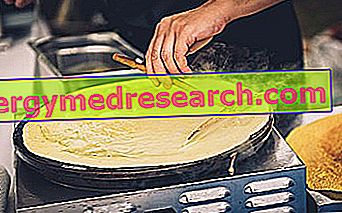Related articles: Painful ovulation
Definition
Ovulation is the phase of the menstrual cycle that coincides with the release of the oocyte by the ovary (usually 14 days before the next menstruation).
For most women, this phenomenon occurs once a month until menopause, except for pregnancy and lactation, without causing any particular physical problems. Sometimes, however, near ovulation, abdominal or pelvic pain occurs, indicated with the medical term "mittelschmerz".
Painful ovulation is caused by a brief and moderate peritoneal irritation that coincides with the rupture of the mature ovarian follicle and the release of the egg cell. Pain is typically unilateral, located in the lower abdomen or pelvis, on the right or left side (depending on which ovary is releasing the egg cell). The extent of the disorder is variable: in some cases, a sense of heaviness or pressure is felt, other times it is possible to experience a sharp and crampy pain.
Furthermore, during ovulation, alterations of the cervical mucus (becoming more dense and elastic), slight blood loss (vaginal spotting) and nausea may appear. Some women present the mittelschmerz periodically (every month), others only occasionally.
In most cases, these manifestations are harmless and do not indicate the presence of an underlying disease. However, painful ovulation can be symptomatic of medical conditions, such as endometriosis, pelvic inflammatory disease, salpingitis, sexually transmitted infections (eg gonorrhea and chlamydia), ovarian cysts and various neoplasms.
Furthermore, severe and persistent pain localized in the lower abdomen or in the pelvic region may indicate the presence of appendicitis and other gastrointestinal problems (eg gastroenteritis and inflammatory bowel disease).
Possible Causes * of Painful Ovulation
- Hemorrhagic corpus luteum
- salpingitis
- Adjoining twist



